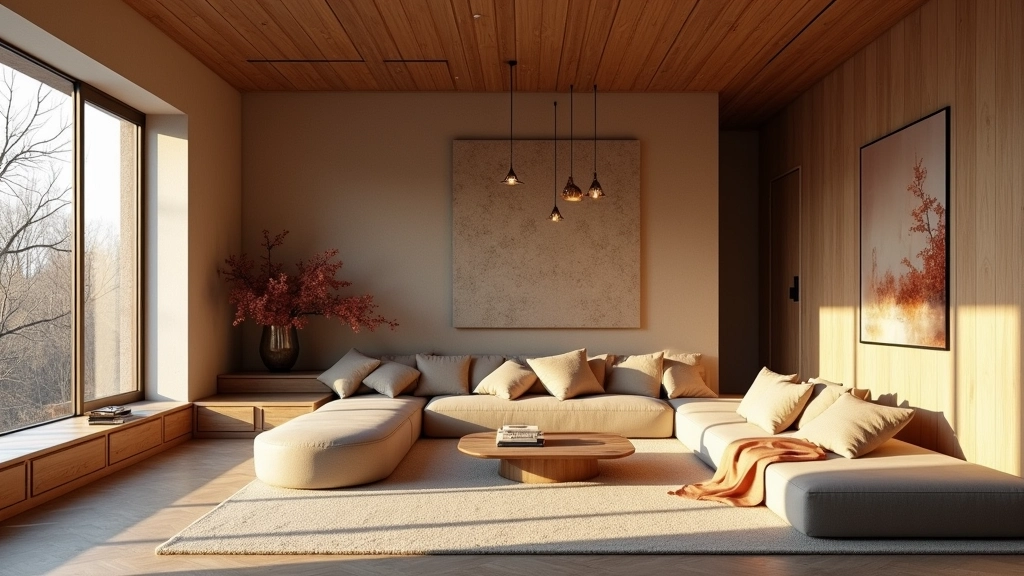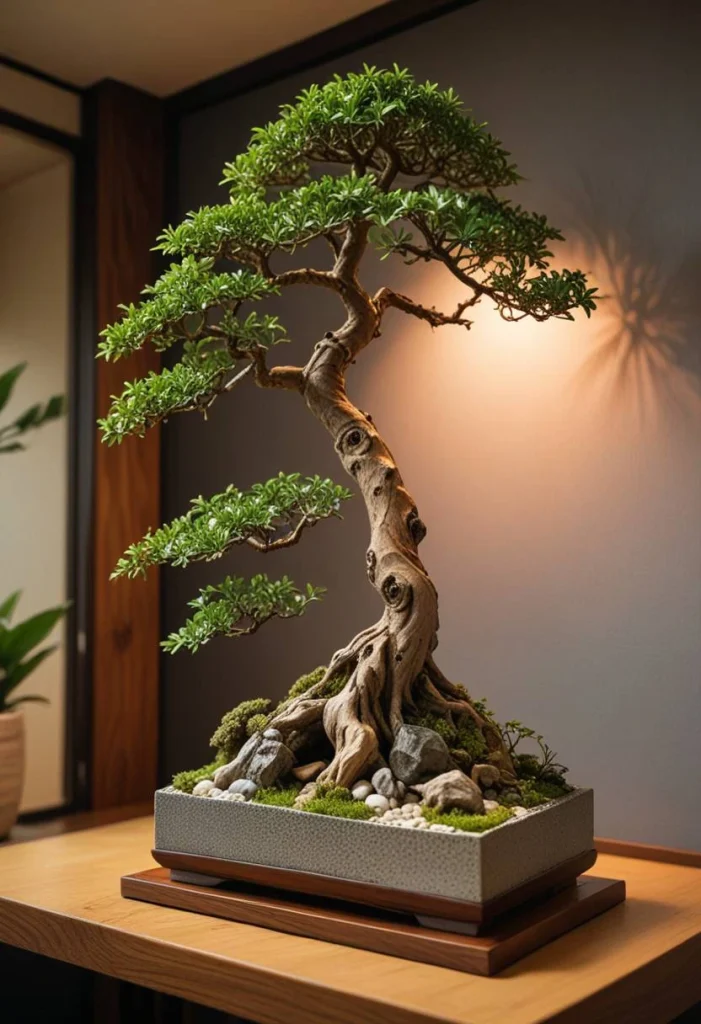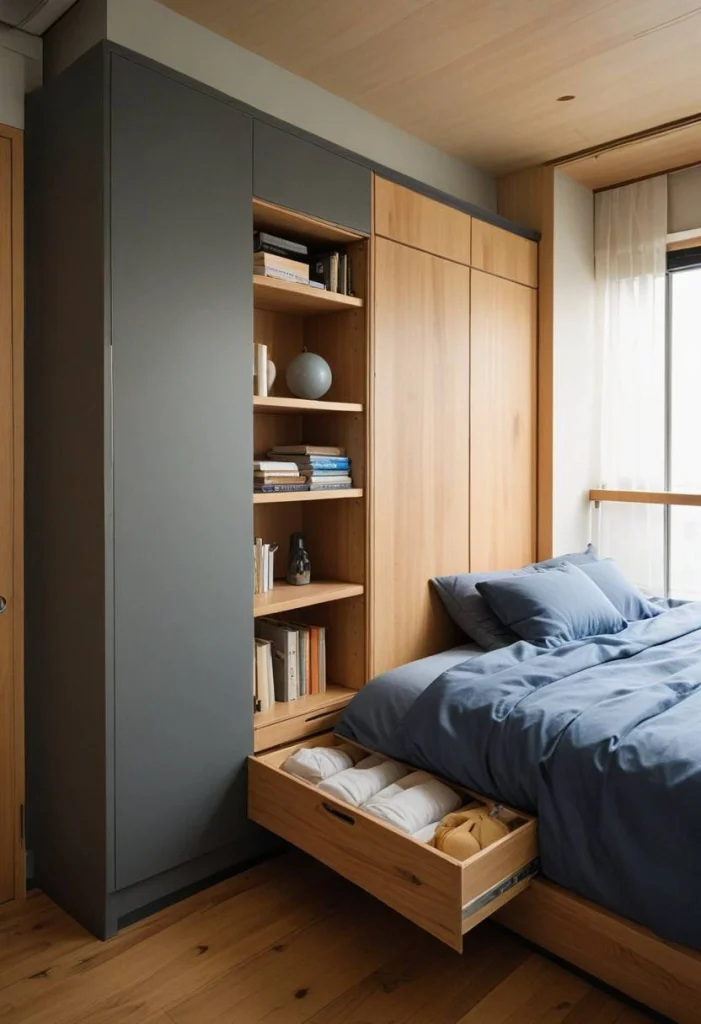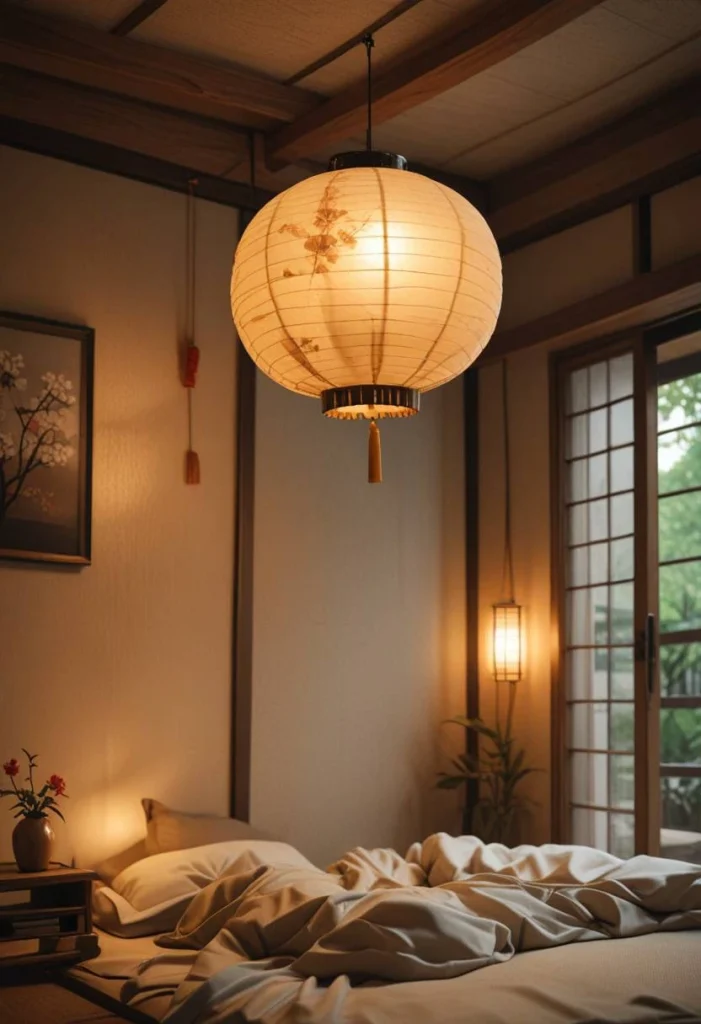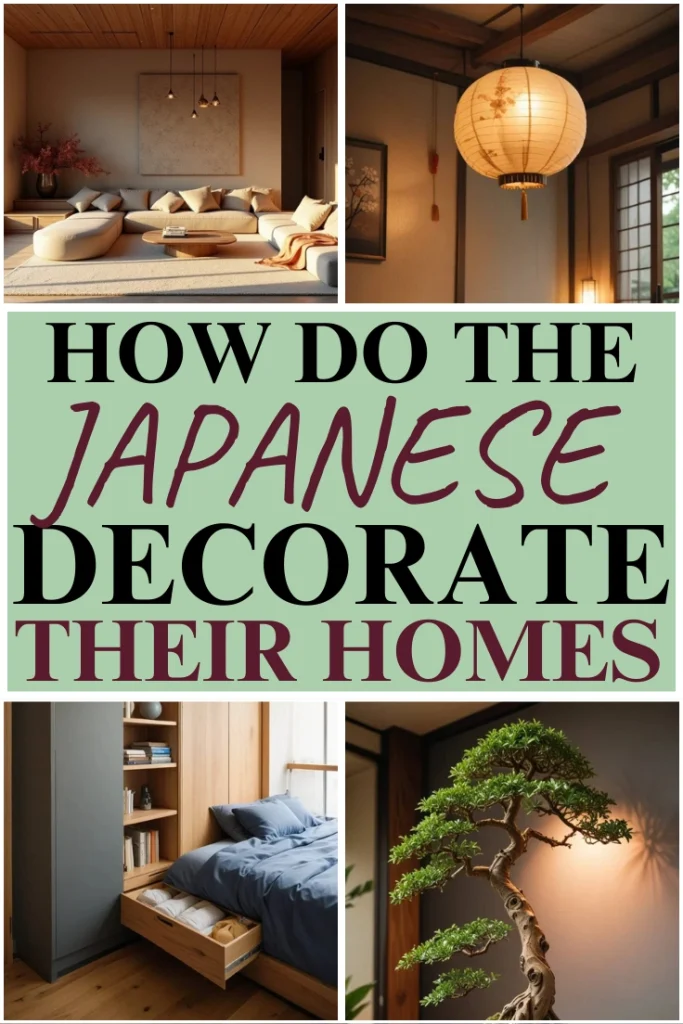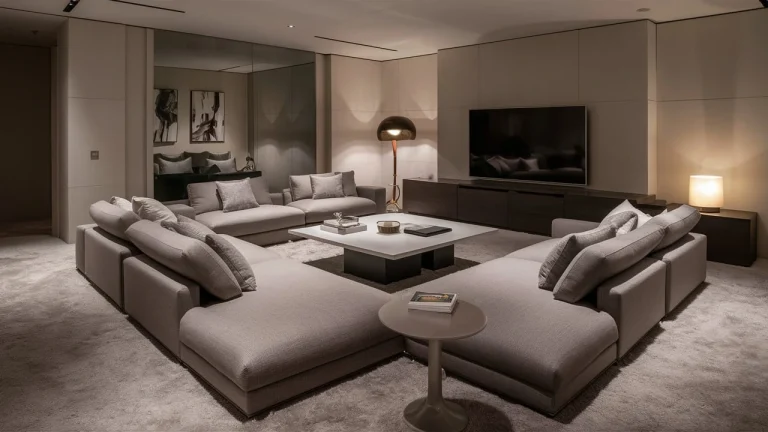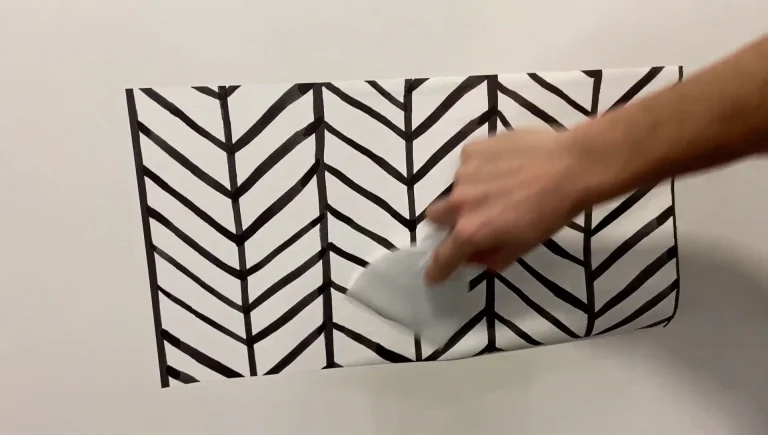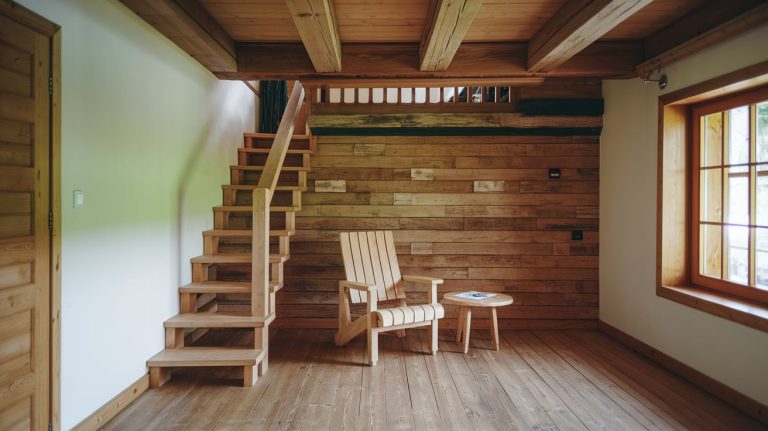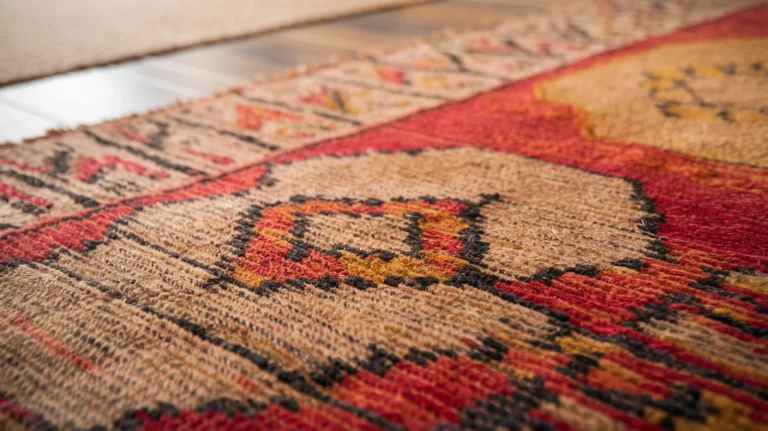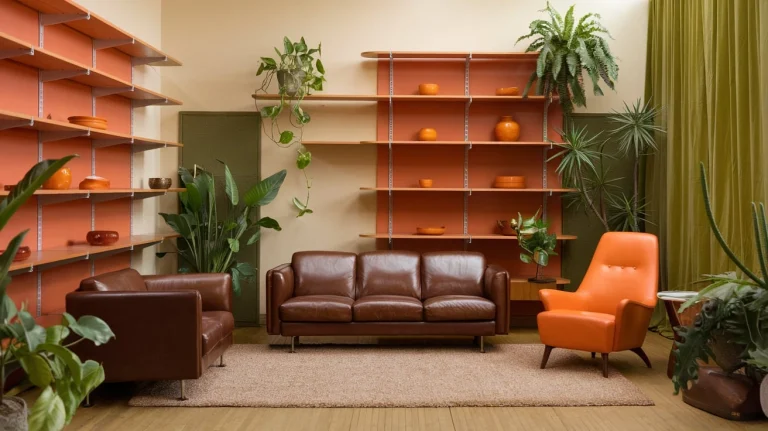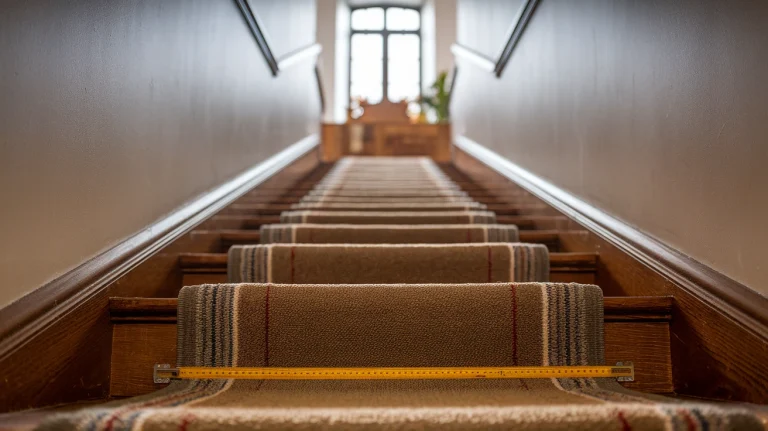Have you ever seen photos of a Japanese home and just felt…calm? I know I have! There’s something special about them. They’re simple, useful, and feel so connected to nature. If you love that peaceful feeling, and you’re wondering how they do it, you’re in the right place! Let me show you how to bring some of that Japanese magic into your own home.
Minimalist Japanese Design: Declutter for a Calmer Mind
The Japanese have this idea called kansha – it’s all about keeping things minimal. It’s not about having empty rooms, but about choosing carefully. Every item should have a purpose, a reason for being there.
They believe that a messy home creates a messy mind. And I think they’re right!
Take a look around your own home. Do you have things that just sit there, collecting dust? Are your drawers overflowing with stuff you never use? The Japanese way is to declutter. Keep only what you truly need and what makes you happy. This creates more space – both in your house and in your head. Trust me, it makes a difference! If you are struggling with space, you might also want to explore some small room layout ideas.
Natural Light & Materials in Japanese Homes: Connecting with Nature
Japanese homes often feature big windows and those cool sliding doors called shoji. These let in tons of natural light. Natural light is super important because it connects you to the outside world. The shoji screens are made of thin paper, so the light is soft and warm, not harsh.
They also use lots of natural materials. Think wood, bamboo, paper, and even silk. These materials have a natural beauty. They add warmth and a real, earthy feeling to the room. Picture a beautiful wooden floor, a woven tatami mat, or a smooth stone sink. These elements help you feel grounded and connected to nature.
Bringing Nature Indoors: Japanese Indoor Gardens & Plants
You’ll often find nature inside Japanese homes too. This might be a small bonsai tree (they’re so cool!), a tiny rock garden, or even just a single, perfect flower in a vase.
These aren’t just decorations. They show a deep respect for nature. A small indoor garden, even just a few potted plants, can totally transform a room. It makes it feel alive! And the gentle sound of water from a small fountain? So relaxing.
The Concept of Ma: Understanding Empty Space in Japanese Design
Ma is a really important idea in Japanese design. Ma is the empty space between things. It’s not just about having nothing there. It’s about using that empty space to create balance and harmony.
Think of it like a drawing. The empty paper is just as important as the lines you draw. The empty space gives the lines their meaning. It’s the same idea in Japanese homes. Where they put furniture and how much open space they leave is carefully planned. It helps the energy flow freely.
Traditional Japanese Decor Elements: Tatami, Shoji, Futons & More
Modern Japanese homes often blend old and new styles. But adding some traditional items can give your home a unique charm. Here are a few of my favorites:
- Tatami Mats: These are mats made of woven straw. They’re soft to walk on, smell amazing, and define living spaces.
- Shoji Screens: We talked about these earlier. They’re sliding doors or room dividers made of paper and wood. They let light filter through, but still give you privacy.
- Futons: These are traditional Japanese beds. You can fold them up and store them away during the day. This is great for saving space!
- Kotatsu: This is a low table with a heater and a blanket. It’s the perfect cozy spot to hang out when it’s cold. I spent many happy evenings around a Kotatsu in Japan. Trust me, it’s very hard to leave on a cold day!
- Chabudai: A short table. People sit on the floor or on tatami mats to use it, for tea or meals.
Japanese Color Palettes: Neutral & Earthy Tones for Relaxation
The colors in Japanese homes are usually soft and inspired by nature. Think light browns, beiges, grays, and greens. These colors are naturally calming. They might add small pops of color with artwork, fabrics, or flowers. But overall, the feeling is understated and elegant. If these colors sound intresting, then you might also like earthy living room ideas.
Space-Saving Japanese Furniture: Function & Flexibility
Japanese homes, especially in cities, are often small. So, everything needs to be useful and adaptable. Furniture often has more than one purpose. A futon can be a bed and a place to sit. Sliding doors can open or close to change the layout of rooms. Storage is cleverly hidden in cabinets or even under the floor.
Japanese Interior Design Principles: Balance & Asymmetry
It’s not just about what you have, but how you arrange it. Japanese people have a great eye for balance. They often use something called fukinsei (which means not perfectly symmetrical). This makes things look more interesting and natural. It’s not messy or random, though. It’s a deliberate way of creating a dynamic feel.
Japanese Lighting: Soft, Ambient, and Relaxing
Lighting is key to creating the right atmosphere. You won’t find many harsh overhead lights. Instead, Japanese homes favor soft, gentle light. They might use paper lanterns (andon) or indirect lighting. This creates a warm, inviting glow that’s perfect for relaxing.
Create Your Own Japanese-Inspired Home: 6 Simple Steps
You don’t have to redo your whole house to get some of this Japanese style. Start small. Clean up one room. Add some plants. Swap out harsh lights for softer ones. Get a beautiful piece of Japanese pottery or art.
Here’s your simple action plan:
- Declutter: Get rid of anything you don’t need or absolutely love.
- Add Natural Elements: Bring in plants, wood, or stone accents.
- Embrace Natural Light: Open those curtains and let the sunshine in!
- Choose Soft Colors: Go for light, earthy tones.
- Create Space: Don’t overcrowd your rooms. Leave some breathing room.
- Add a Traditional Touch: Find a few cool Japanese items to add character.
Final Thoughts, and What to Do Next
Japanese people decorate their homes with intention. They focus on simplicity, nature, and creating a calm space. It’s about making a home that’s not only beautiful but also functional and peaceful. If you like the Japanese style, you also need to see these amazing Japandi bathroom ideas.
The best part? You can totally adapt these ideas to your own home, no matter what your style is now. Just think about your space, your belongings, and the feeling you want to create.
Start by trying one or two of the tips I’ve shared. Maybe you’ll start by decluttering one area, or maybe you’ll add a beautiful bonsai tree. Even small changes can make a big difference. And if you’re interested in learning more, you might also like to explore Wabi-Sabi (finding beauty in imperfection). I can’t stress this enough: the goal is to create a home that feels good to you – a sanctuary where you can relax, recharge, and connect with yourself and nature. You got this!

